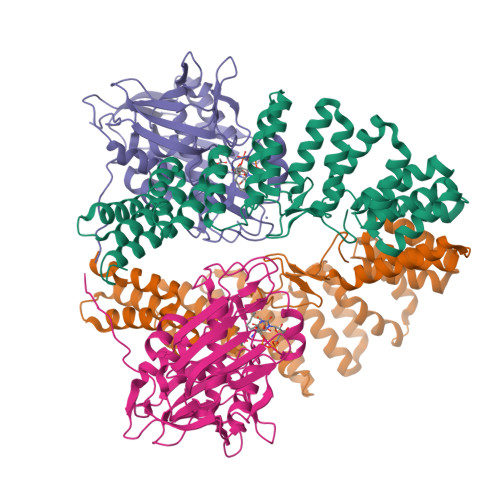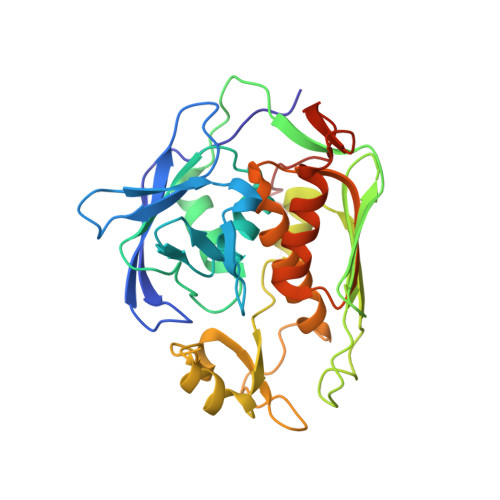Dual function of LapB (YciM) in regulating Escherichia coli lipopolysaccharide synthesis.
Shu, S., Tsutsui, Y., Nathawat, R., Mi, W.(2024) Proc Natl Acad Sci U S A 121: e2321510121-e2321510121
- PubMed: 38635633
- DOI: https://doi.org/10.1073/pnas.2321510121
- Primary Citation of Related Structures:
8V24 - PubMed Abstract:
Levels of lipopolysaccharide (LPS), an essential glycolipid on the surface of most gram-negative bacteria, are tightly controlled-making LPS synthesis a promising target for developing new antibiotics. Escherichia coli adaptor protein LapB (YciM) plays an important role in regulating LPS synthesis by promoting degradation of LpxC, a deacetylase that catalyzes the first committed step in LPS synthesis. Under conditions where LPS is abundant, LapB recruits LpxC to the AAA+ protease FtsH for degradation. LapB achieves this by simultaneously interacting with FtsH through its transmembrane helix and LpxC through its cytoplasmic domain. Here, we describe a cryo-EM structure of the complex formed between LpxC and the cytoplasmic domain of LapB (LapB cyto ). The structure reveals how LapB exploits both its tetratricopeptide repeat (TPR) motifs and rubredoxin domain to interact with LpxC. Through both in vitro and in vivo analysis, we show that mutations at the LapB cyto /LpxC interface prevent LpxC degradation. Unexpectedly, binding to LapB cyto also inhibits the enzymatic activity of LpxC through allosteric effects reminiscent of LpxC activation by MurA in Pseudomonas aeruginosa. Our findings argue that LapB regulates LPS synthesis in two steps: In the first step, LapB inhibits the activity of LpxC, and in the second step, it commits LpxC to degradation by FtsH.
Organizational Affiliation:
Department of Pharmacology, Yale University School of Medicine, New Haven, CT 06520.






















